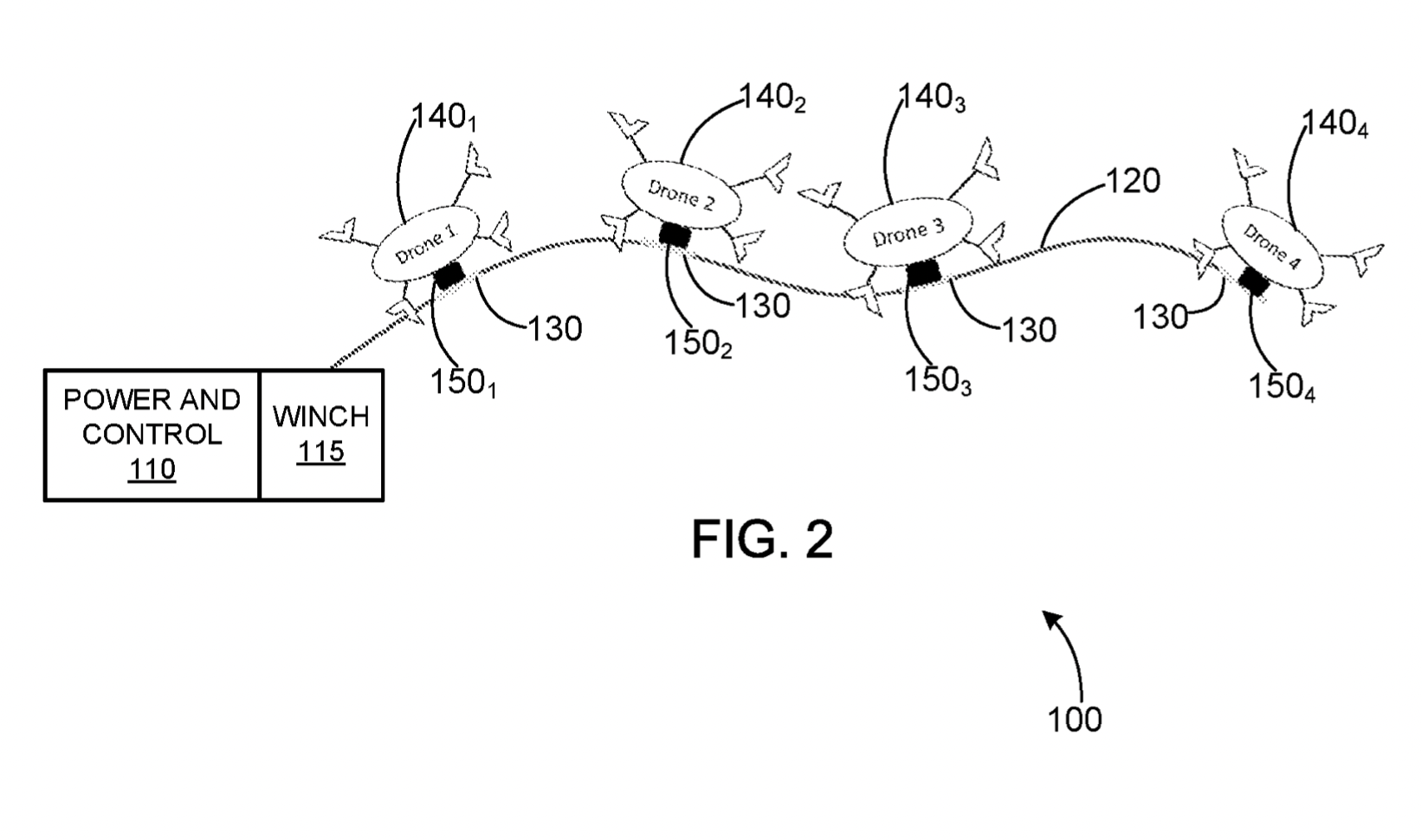A New In-Flight Recharging System Goals to Overcome Electrical Drones’ Largest Limitation—Battery Life
by DRONELIFE Workers Author Ian J. McNab
The web, GPS, and microwave ovens have been all the results of navy analysis, and now, that ingenuity is likely to be used to make drones that by no means should land. The U.S. Military Fight Capabilities Improvement Command Military Analysis Laboratory, based mostly in Adelphi, Maryland, just lately acquired a patent for a brand new drone tethering system, (serial #US2024286773) designed to increase drone capabilities by creating new recharging programs utilizing different UAVs.

The system is designed to ultimately permit for in-flight recharging of UAVs utilizing a central “power bank” drone that would cost up a number of flight mates, equally to how an air refueling aircraft like a KC-135 Stratotanker can restock fight planes, extending their mission timelines and making them extra survivable in mid-air.
The complete textual content of the summary reads as follows, describing “(a) powered drone tether and deployment system including a plurality of drone coupling/decoupling mechanisms which enable the coupling/decoupling thereto of rechargeable drones in flight. A lead drone may carry the drone tether so as to extend the tether from a base station supplying power thereto such that one or more rechargeable drones may attach to coupling/decoupling mechanisms for charging, and then detach from the coupling/decoupling mechanisms to perform independent flight tasks.”
Mainly, the thought is to make drones fly longer, eradicating one of many largest challenges of electrical flight- battery life. The US navy has clearly been excited by extending efficient flight size of UAVs, investing in or whitelisting many long-range drones As most drones are electrically powered, they wrestle over lengthy distances, the place gasoline, diesel, or aircraft-fuel powered UAVs can fly additional.
Nonetheless, if they might cost whereas in flight, the potential for electrically powered drones for use in long term, fastened positions for purposes like surveillance or communications may exponentially enhance, giving the US navy extra flexibility in dynamic working environments. A drone could possibly be a movable watch tower, or a very versatile communications antenna system that could possibly be remotely piloted to the place its wanted and left there to be robotically recharged by UAV.
Whereas we’re most likely nonetheless a number of years off from seeing the tether imaginative and prescient absolutely realized, the long run vary of drones could possibly be massively elevated in the event that they didn’t should land to recharge, making this an thrilling promise of issues to come back.
Learn extra:
Ian McNabb is a workers author based mostly in Boston, MA. His pursuits embody geopolitics, rising applied sciences, environmental sustainability, and Boston School sports activities.
Miriam McNabb is the Editor-in-Chief of DRONELIFE and CEO of JobForDrones, knowledgeable drone companies market, and a fascinated observer of the rising drone business and the regulatory atmosphere for drones. Miriam has penned over 3,000 articles centered on the business drone house and is a global speaker and acknowledged determine within the business. Miriam has a level from the College of Chicago and over 20 years of expertise in excessive tech gross sales and advertising and marketing for brand new applied sciences.
For drone business consulting or writing, Electronic mail Miriam.
TWITTER:@spaldingbarker
Subscribe to DroneLife right here.